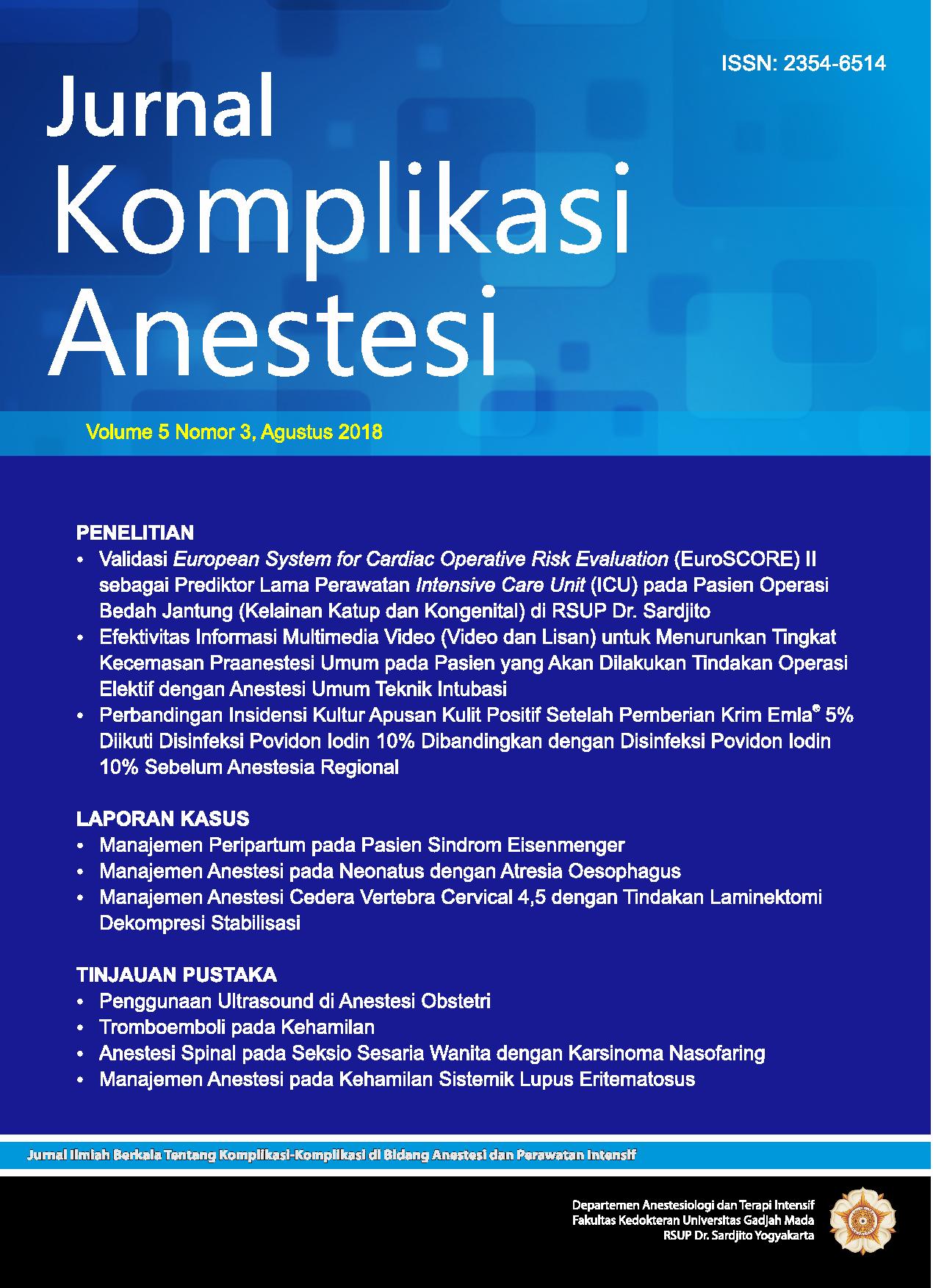Penggunaan Ultrasound di Anestesi Obstetri
Abstract
The incidence of complex medical problems in obstetric populations is is rising, and anesthesia for parturient patients add another problem in this complexity. Ultrasound provides an accurate visualization of the internal anatomical structures that may help assess clinical conditions and improve the safety of therapeutic interventions. Ultrasound procedures in obstetric anesthesia have been used in guiding the neuraxial block, transversus abdominis plane block for post-caesarean section pain control, and vascular access. Ultrasound may also be performed to assess gastric volume, airway evaluation in critical obstetric patients, lung evaluation, transesophageal echocardiography, and intracranial pressure assessment as a surrogate marker of preeclampsia. To succeed in ultrasound guidance techniques, it requires familiarity with relevant cross sectional anatomy. Knowledge of anatomy, without any understanding of its structural formation on ultrasound will hamper the understanding of ‘sonoanatomy’.

Copyright (c) 2018 Ratih Kumala Fajar Apsari, Yusmein Uyun

This work is licensed under a Creative Commons Attribution-NonCommercial-ShareAlike 4.0 International License.
The Contributor and the company/institution agree that all copies of the Final Published
Version or any part thereof distributed or posted by them in print or electronic format as permitted herein will include the notice of copyright as stipulated in the Journal and a full citation to the Journal.
















